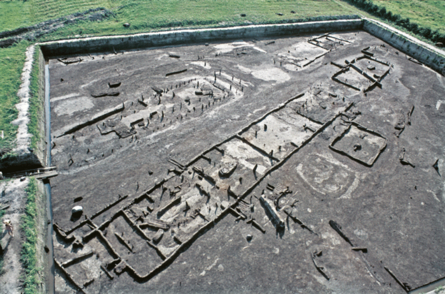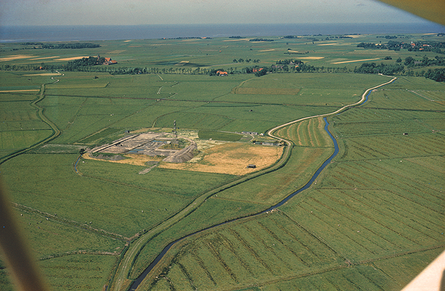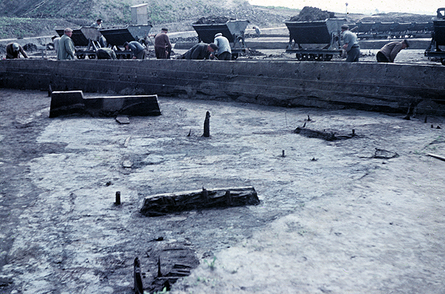Archaeological Textiles from the Salt Marshes. Studies on Production and Distribution based on the Example of Feddersen Wierde, district of Cuxhaven
Archaeological Textiles from the Salt Marshes. Studies on Production and Distribution based on the Example of Feddersen Wierde, Cuxhaven District
From the beginning of the 1st millennium AD onwards the production of wool and fabrics were among the most significant strands of manufacturing carried out by the population of the coastal marshes. This is demonstrated by the frequent finds of spinning and weaving implements as well as the large number of well-preserved textile finds recovered from the settlements.
Despite the abundant source material no comprehensive interdisciplinary studies have so far been conducted on nonwoven woollen fabrics and woollen weaves from sites in Lower Saxony. Likewise, a detailed study of the production- and distribution networks for textile products remains a desideratum, even though the anticipated results will also be of key significance for the understanding of the exchange of goods throughout the entire coastal region.
The Wurt settlement Feddersen Wierde (Cuxhaven District), extensively excavated between 1954 and 1963, holds a key position to address this set of questions as the excavations produced a comprehensive organic finds assemblage. Detailed analyses of implements used in textile production and of nonwoven- and woven fabrics promise to enable a reconstruction of the entire production process, beginning with sheep husbandry, via the treatment of fleeces to the processing of wool.
The aim of the research project, funded by the Lower Saxony Ministry for Science and Culture, will be a comprehensive analysis and the creation of a textile typology by Dr. Annette Siegmüller und Christina Peek M.A. Furthermore, within the scope of a master’s thesis at Kiel University all implements for spinning and weaving will be studied by Franziska Steffensen with the help of a GIS-database. The assemblage will be classified by periods and examined with an array of methods including analyses of aDNA, fibre quality and dyes.
Bibliography
Haarnagel, W., 1979: Die Grabung Feddersen Wierde. Methode, Hausbau, Siedlungs- und Wirtschaftsformen sowie Sozialstruktur. Feddersen Wierde. Die Ergebnisse der Ausgrabung der vorgeschichtlichen Wurt Feddersen Wierde bei Bremerhaven in den Jahren 1955-1963. Band II, Wiesbaden 1979.
Hayen, H., Ullemeyer, R., Tidow, K., Ruttner, F., u. Institut für Härterei-Technik, 1981: Einzeluntersuchungen zur Feddersen Wierde. Wagen, Textil- und Lederfunde, Bienenkorb, Schlackenanalysen. Feddersen Wierde. Die Ergebnisse der Ausgrabung der vorgeschichtlichen Wurt Feddersen Wierde bei Bremerhaven in den Jahren 1955-1963. Band III, Wiesbaden 1981.
Peek, C., u. Siegmüller, A., 2007: Kostbarkeiten aus dem Norden? Neue Überlegungen zur Identifizierung Friesischer Tuche. Archäologisches Korres¬pondenzblatt Heft 2/ 2007, 283-296.
Siegmüller, A., 2013: Schafhaltung und Schafwäsche – Überlegungen zur Produktion und Funktion von Geweben im frühen Mittelalter. In: J. Banck-Burgess u. C. Nübold (Hrsg.), The North European Symposium for Archaeological Textiles XI, Rhaden/ Westf. 2013, 241-246.
Tidow, K., U. Rast-Eicher, A., 2001a: Ein Mischgewebe aus der Feddersen-Wierde, Ldkr. Cuxhaven. Probleme der Küstenforschung im südlichen Nordseegebiet 27, 2001, 53-56.




